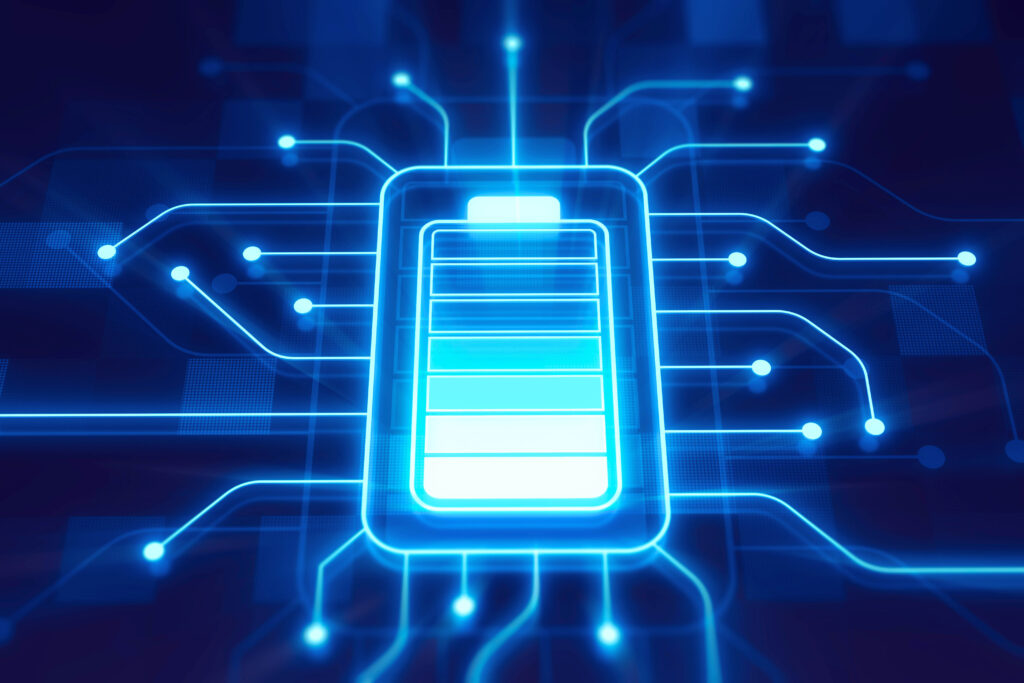The world is on the cusp of a new era in energy storage, one that could revolutionize the way we think about and use power. At the forefront of this transformation is the solid-state battery, a technology that promises to offer significant improvements over traditional lithium-ion batteries. With applications ranging from electric vehicles (EVs) to portable electronics, solid-state batteries are poised to become a cornerstone of future energy solutions. This article will delve into the science behind solid-state batteries, their advantages and challenges, and their potential impact on various industries.
What Are Solid-State Batteries?
Solid-state batteries are a type of energy storage device that uses solid electrodes and a solid electrolyte, unlike traditional lithium-ion batteries, which use liquid or gel electrolytes. The solid electrolyte in these batteries can be made of various materials, including ceramics, glass, and certain polymers. This solid component is what gives the battery its name and its unique properties.
The basic operation of a solid-state battery is similar to that of a conventional battery: it involves the movement of ions between the anode and the cathode through an electrolyte. However, the use of a solid electrolyte instead of a liquid one provides several advantages, which are discussed below.
The Science Behind Solid-State Batteries
To understand the significance of solid-state batteries, it’s essential to grasp the basic principles of how they work. In a conventional lithium-ion battery, lithium ions move through a liquid electrolyte from the anode (typically made of graphite) to the cathode (often composed of lithium cobalt oxide) during discharge, and the reverse happens during charging.
In contrast, solid-state batteries replace the liquid electrolyte with a solid material. This solid electrolyte conducts lithium ions between the anode and the cathode, and its composition can vary depending on the type of battery. The solid electrolyte can be ceramic, sulfide-based, or polymer-based, each offering different benefits and drawbacks.
One of the key challenges in the design of solid-state batteries is finding a solid electrolyte that is both a good conductor of lithium ions and stable across the voltage range of the battery. Researchers have made significant progress in this area, discovering materials that offer the right balance of conductivity, stability, and manufacturability.
Advantages of Solid-State Batteries

The potential advantages of solid-state batteries over traditional lithium-ion batteries are numerous and could lead to significant improvements in various applications:
Higher Energy Density:
One of the most significant benefits of solid-state batteries is their higher energy density. This means that they can store more energy in the same amount of space, making them ideal for applications where size and weight are critical factors, such as in electric vehicles and portable electronics.
Improved Safety:
Safety is a major concern with conventional lithium-ion batteries, as the liquid electrolyte is flammable and can lead to fires or explosions if the battery is damaged or improperly charged. Solid-state batteries eliminate this risk by using a non-flammable solid electrolyte, making them inherently safer.
Longer Lifespan:
Solid-state batteries tend to have a longer lifespan compared to traditional batteries. The solid electrolyte is less prone to degradation over time, which means these batteries can endure more charge-discharge cycles before their performance begins to deteriorate.
Faster Charging:
Another advantage is the potential for faster charging times. The solid electrolyte can support higher current densities, which means that solid-state batteries can be charged more quickly than their liquid-based counterparts.
Wider Operating Temperature Range:
Solid-state batteries can operate effectively over a broader range of temperatures, which makes them more versatile and reliable in various environments, from extreme cold to high heat.
Challenges in Solid-State Battery Development
Despite the promising advantages, the development and commercialization of solid-state batteries face several significant challenges:
Manufacturing Complexity:
One of the primary challenges is the complexity of manufacturing solid-state batteries at scale. The materials used in solid electrolytes are often more difficult to process than the liquid electrolytes used in traditional batteries, leading to higher production costs.
Interface Issues:
The interface between the solid electrolyte and the electrodes is another area of concern. Ensuring good contact and reducing resistance at these interfaces is crucial for the battery’s performance, but it can be challenging to achieve in practice.
Material Stability:
While solid electrolytes offer many benefits, finding materials that are stable across a wide range of operating conditions is difficult. Some solid electrolytes can react with the electrodes or degrade over time, reducing the battery’s lifespan and performance.
Cost:
Currently, solid-state batteries are more expensive to produce than traditional lithium-ion batteries. This cost factor has been a significant barrier to their widespread adoption, particularly in cost-sensitive markets like consumer electronics.
Applications of Solid-State Batteries
The potential applications of solid-state batteries are vast, spanning several industries and promising to revolutionize each:
Electric Vehicles (EVs):

Perhaps the most significant impact of solid-state batteries will be in the automotive industry. The higher energy density and improved safety of solid-state batteries make them an ideal power source for electric vehicles. These batteries could significantly extend the range of EVs, reduce charging times, and improve overall vehicle safety, making electric cars more appealing to a broader audience.
Consumer Electronics:
In the world of consumer electronics, solid-state batteries could lead to thinner, lighter, and longer-lasting devices. Smartphones, laptops, and wearable technology could all benefit from the higher energy density and faster charging times of solid-state batteries, offering consumers better performance and longer battery life.
Energy Storage Systems:

Solid-state batteries also hold promise for energy storage systems, particularly in renewable energy applications. As the world shifts towards more sustainable energy sources like solar and wind, the need for efficient energy storage becomes increasingly important. Solid-state batteries could provide the necessary storage capacity and stability to make renewable energy sources more viable.
Aerospace and Defense:
The aerospace and defense industries could also see significant benefits from solid-state batteries. The higher energy density and wider operating temperature range make these batteries well-suited for use in drones, satellites, and other aerospace applications, where reliability and performance are critical.
Current Developments and Future Outlook
The development of solid-state batteries is still in its early stages, but significant progress is being made. Several major companies and research institutions are investing heavily in this technology, with the goal of overcoming the current challenges and bringing solid-state batteries to market.
Research and Innovation:
Ongoing research is focused on improving the materials used in solid electrolytes, enhancing manufacturing techniques, and solving interface issues. Breakthroughs in these areas could lead to the commercialization of solid-state batteries within the next few years.
Industry Collaboration:
Collaboration between companies, research institutions, and governments will be key to accelerating the development of solid-state batteries. Public-private partnerships and funding initiatives can help to share the risks and costs associated with bringing this technology to market.
Pilot Programs and Prototypes:
Several companies have already developed prototype solid-state batteries and are conducting pilot programs to test their performance in real-world applications. These early tests are critical for identifying any remaining issues and refining the technology before it can be scaled up for mass production.
Market Entry and Adoption:
The first commercial solid-state batteries are expected to enter the market in the next few years, initially in high-end applications like electric vehicles and aerospace. As the technology matures and costs come down, solid-state batteries are likely to become more widely adopted across various industries.
The Impact of Solid-State Batteries on the Environment
In addition to their technological benefits, solid-state batteries could have a positive impact on the environment. The higher energy density and longer lifespan of these batteries mean that fewer resources are needed to produce and replace them, reducing the environmental footprint of battery production.
Moreover, the improved safety of solid-state batteries reduces the risk of battery fires and explosions, which can have serious environmental consequences. As solid-state batteries become more widespread, they could contribute to a reduction in electronic waste and a more sustainable energy ecosystem.
Conclusion
Solid-state batteries represent a significant advancement in energy storage technology, offering numerous benefits over traditional lithium-ion batteries. While there are still challenges to overcome, the potential of solid-state batteries to revolutionize industries such as automotive, consumer electronics, and renewable energy is undeniable.
As research and development continue, we can expect to see solid-state batteries become an increasingly important part of our energy landscape, driving innovation and sustainability in the years to come. Whether it’s powering the next generation of electric vehicles, making our smartphones last longer, or storing renewable energy more efficiently, solid-state batteries are set to play a crucial role in shaping the future of energy.
